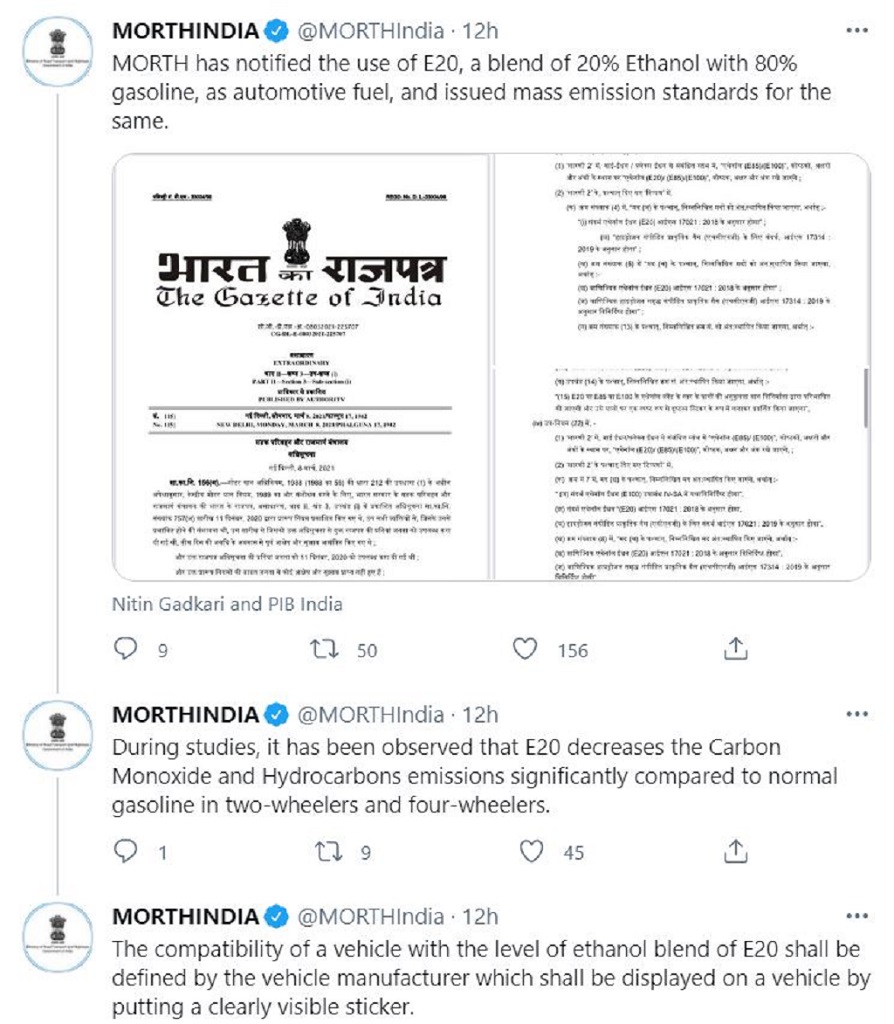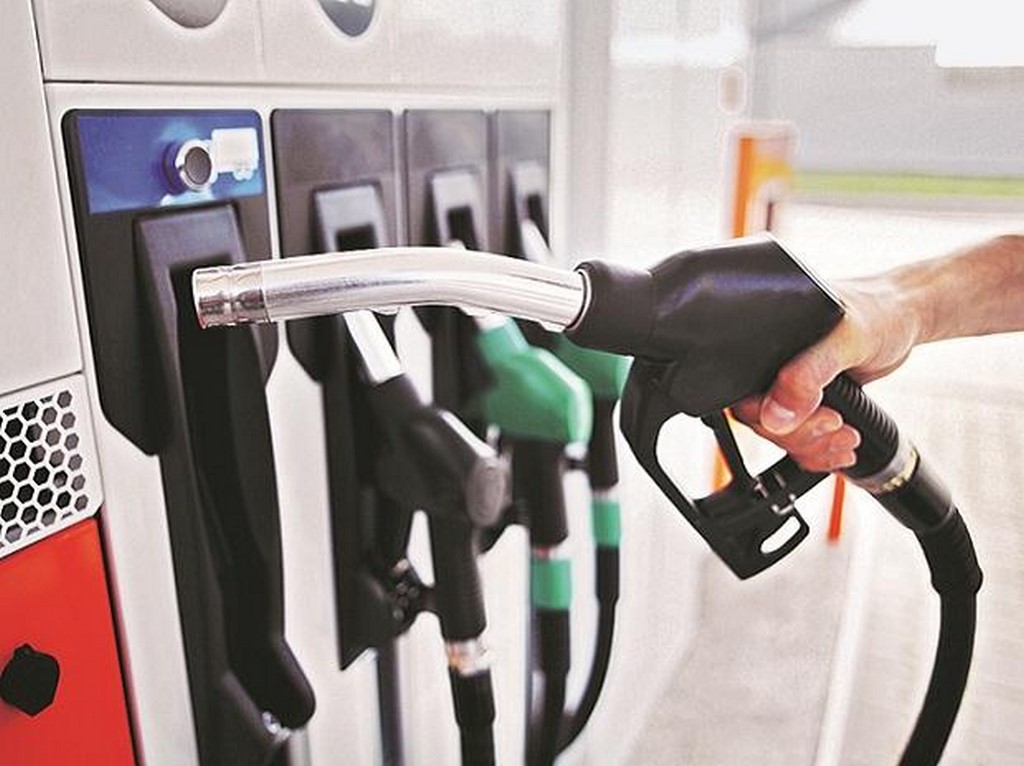E20 Automotive Fuel Approved For Vehicular Use
It is a blend of 20 percent ethanol with 80 percent petrol and is claimed to reduce carbon monoxide and hydrocarbon emissions in 2- and 4-wheelers.
It is a blend of 20 percent ethanol with 80 percent petrol and is claimed to reduce carbon monoxide and hydrocarbon emissions in 2- and 4-wheelers.
Home » General News » E20 Automotive Fuel Approved For Vehicular Use

The Ministry of Road Transport and Highways (MORTH) has officially notified the use of E20 as automotive fuel in India from hereon.
E20 is a blend of 20 percent ethanol with 80 percent petrol and the ministry claims studies have shown that it decreases carbon monoxide and hydrocarbon emissions “significantly compared to normal gasoline in two-wheelers and four-wheelers”.
The government had on 11th December 2020 published the draft rules about using E20 automotive fuel and copies of the Gazette notification were made available to the public.
Objections and suggestions were invited, but, the ministry says, no comment was made by the public regarding the draft rule within the set 30-day period. Thus the new rules have come into force from the date of their publication in the Gazette, which is 8th March 2021.
Also, the ministry has set mass emission standards for the fuel and has directed automakers to define a vehicle’s compatibility with specific ethanol blend levels.
In a tweet, the ministry has stated that the compatibility of a vehicle with the specific ethanol blend levels (E20 or E85 or E100) shall be defined by the vehicle manufacturer and the detail should be displayed on the vehicle by way of a clearly visible sticker.
This move should help reduce India’s petrol import by a noticeable amount, for, E20 automotive fuel would double the usage of ethanol content in the fuel from now on. Until now, only 10 percent ethanol (E10) was allowed to be blended with petrol.
Although the rule has been put in place, the realisation of it might take some time. A decade has passed since E10 was made mandatory. But, due to shortages in availability of ethanol, across the nation, petrol does not have 10 percent ethanol content yet.
Thus, achieving 20 percent ethanol blend would need some serious work, but should help the government achieve its target of 20 percent ethanol blending in petrol by 2030.
Finally, one cannot dismiss the possibility of the cost of petrol reducing with increase in ethanol content, for ethanol will be procured domestically.

